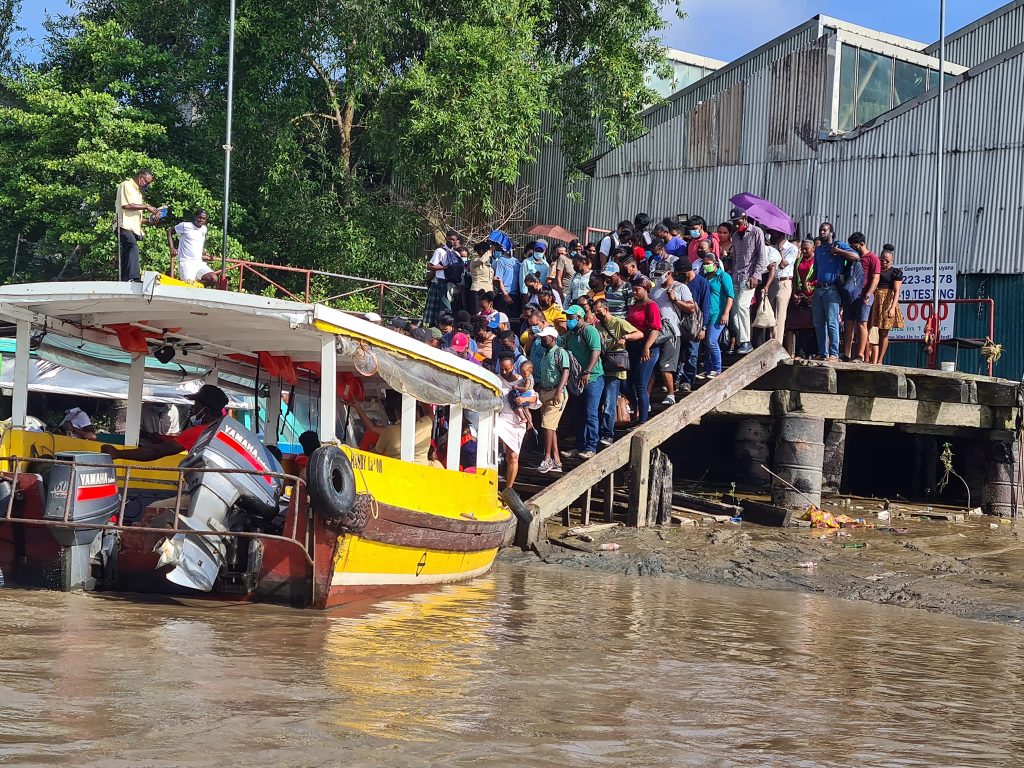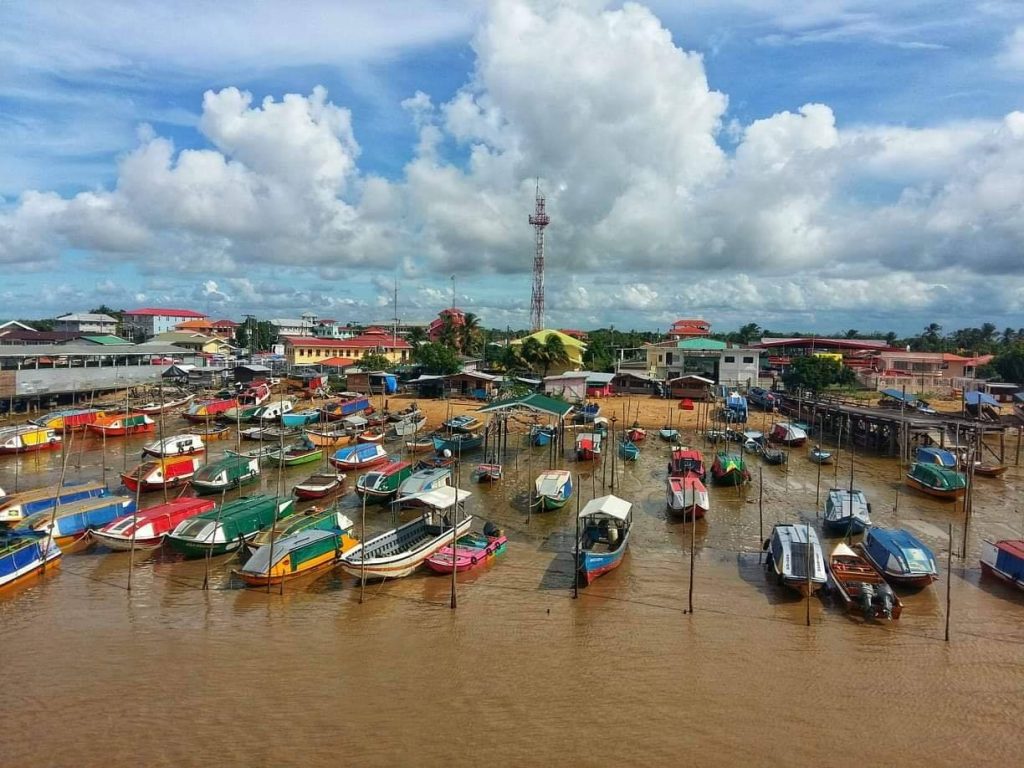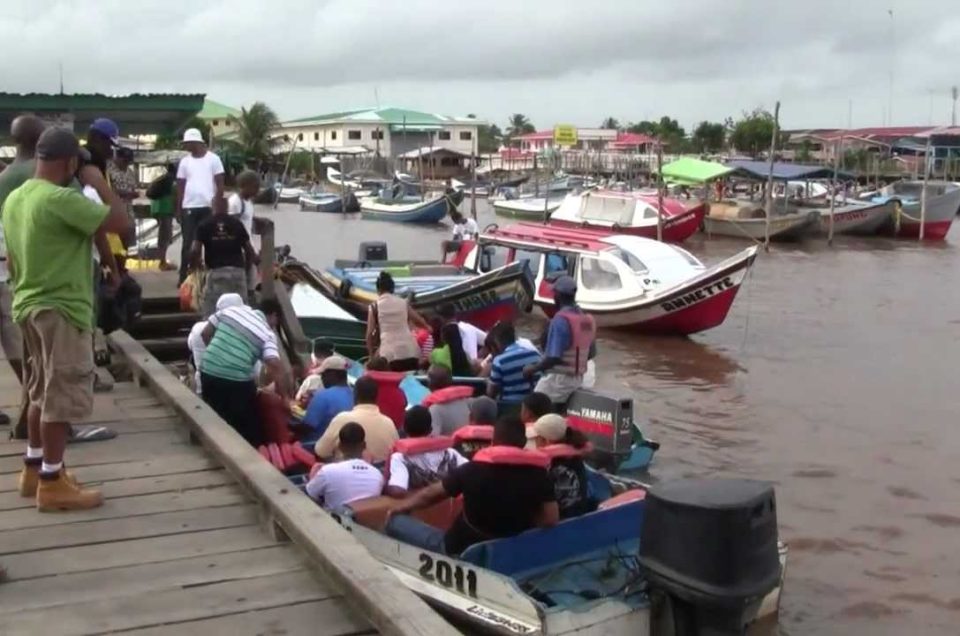Guyana also known as the land of many waters has a vast network of rivers and waterways and offers various boat and ferry crossing stellings and waterfronts that play a significant role in transportation, trade, and tourism. These stellings not only facilitate the movement of people and goods but also provide picturesque locations that reflect the country’s rich cultural and natural heritage. Here are some of the most popular boat and ferry crossings and waterfronts in Guyana.
1. Georgetown Stabroek Stelling

Located in the heart of Guyana’s capital, the Georgetown Stabroek Stelling is one of the busiest and most iconic ferry terminals. It serves as a major hub for travel between Georgetown and other riverine areas like Vreed-en-Hoop across the Demerara River. The stelling is easily identifiable by its bustling market and the historic Stabroek Market clock tower nearby, which adds a unique charm to the waterfront.
2. Vreed-en-Hoop Stelling

Situated on the western bank of the Demerara River, across from Georgetown, Vreed-en-Hoop Stelling is another pivotal ferry terminal. It is a key connection point for commuters traveling between the capital and the West Bank Demerara and Essequibo regions. The stelling’s proximity to Vreed-en-Hoop’s local markets and shops makes it a bustling hub of activity.
3. Parika Stelling

Parika, located at the mouth of the Essequibo River, is a vital stelling and gateway to the Essequibo Islands and further interior regions. Parika Stelling facilitates the movement of passengers and goods to destinations like Bartica, Wakenaam, Leguan, and Supenaam. The lively waterfront features local vendors, food stalls, and a colorful atmosphere that showcases the vibrant culture of the region.
4. Bartica Stelling
Known as the “Gateway to the Interior,” Bartica is a town located on the confluence of the Essequibo, Mazaruni, and Cuyuni Rivers. The Bartica Stelling is a crucial transit point for those venturing into the mining districts and hinterlands. The waterfront here offers scenic views of the surrounding rivers and serves as a hub for river travel and trade.
5. Supenaam Stelling
Located on the Essequibo Coast, the Supenaam Stelling is an important crossing point for passengers and vehicles traveling between the coast and the Essequibo Islands, as well as further inland destinations. The stelling’s location ensures it is a vital link for local communities and helps promote the economic activities of the region.
6. Rosignol Stelling
Rosignol Stelling, situated on the western bank of the Berbice River, connects to New Amsterdam on the eastern bank. This stelling is a vital crossing for travelers and goods moving between the Berbice region and the rest of the country. The crossing facilitates important trade and commerce activities and is a critical link in Guyana’s transportation network.
7. Moleson Creek Stelling
Moleson Creek Stelling, located near the border with Suriname, is Guyana’s main international ferry terminal. It operates the Canawaima Ferry, which connects Guyana with Suriname, facilitating both passenger and cargo transport. This crossing is important for international trade, travel, and cultural exchange between the two countries.
8. Wakenaam and Leguan Stellings
The islands of Wakenaam and Leguan in the Essequibo River have their own ferries and stellings that connect them to Parika and other parts of Guyana. These stellings provide essential links for island residents and contribute to the vibrant agricultural activities that these islands are known for.
9. Kumaka Stelling (Moruca Region)
The Kumaka Stelling in the Moruca Region is a gateway to several Amerindian villages and remote communities. The stelling is integral for the transportation of goods and people, providing a crucial link to the interior regions, fostering trade, and promoting cultural exchanges.
10. Port Kaituma Stelling
Located in the Barima-Waini region, Port Kaituma is an important stelling for the mining areas of Guyana. It serves as a transit point for supplies and equipment heading to the interior mining districts and as an entry point for miners and other travelers exploring the region.
Waterfronts and Their Significance
Georgetown Waterfront
The Georgetown waterfront, extending along the Demerara River, is not just a transportation hub but also a scenic locale featuring historic buildings, bustling markets, and vibrant nightlife. The sea wall area, popular among locals and tourists, offers a place to relax, enjoy the ocean breeze, and take in panoramic views of the river, especially during the evenings when the sea wall becomes a social gathering spot.
New Amsterdam Waterfront
New Amsterdam, the oldest town in Guyana, boasts a historic waterfront along the Berbice River. The colonial architecture, along with the presence of local markets and shops, provides a charming backdrop for river activities. The waterfront is an essential part of daily life, facilitating transportation and commerce in the Berbice region.
Linden Waterfront
Situated along the Demerara River, Linden’s waterfront is a blend of industrial activity and natural beauty. Linden is known for its bauxite mining industry, and the waterfront plays a crucial role in the transportation of minerals. It also offers scenic spots for locals to relax and enjoy the river views.
Bartica Waterfront
Bartica’s waterfront is a bustling area where the Essequibo, Mazaruni, and Cuyuni Rivers converge. The picturesque views and the constant movement of boats and ferries make it an intriguing place for visitors. This waterfront is the lifeline for access to the interior regions and teeming with activities every day.
The boat and ferry crossing stellings and waterfronts of Guyana are more than just transit points; they are lifelines that connect communities, drive commerce, and enrich cultural exchanges. From the busy Stabroek Stelling in Georgetown to the serene shores of Wakenaam, each location offers its own unique panorama and charm, underscoring the essential role that these crossings play in the daily lives of Guyanese people. Exploring these waterfronts reveals the dynamic interplay between Guyana’s waterways and its historical, economic, and cultural fabric. Whether you are traveling for leisure or crossing for business, Guyana’s stellings and waterfronts promise a rich tapestry of experiences.

